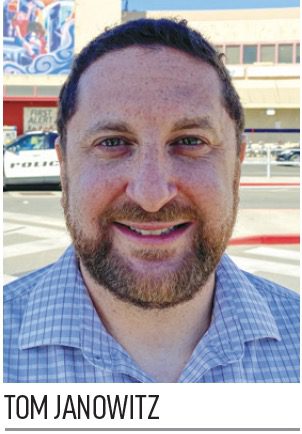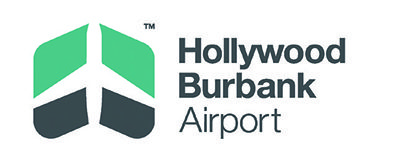An online reservation system for parking, introduced at Hollywood Burbank Airport (BUR) back in July 2019, is earning its keep amid industrywide traffic declines.
An online reservation system for parking, introduced at Hollywood Burbank Airport (BUR) back in July 2019, is earning its keep amid industrywide traffic declines.
 In March 2020, BUR temporarily suspended its valet services as the global COVID-19 pandemic began to take center stage. A little more than three months later, curbside valet resumed with new safeguards in place: Team members were required to wear face masks and gloves when handling vehicles, and markers on the ground reminded customers to practice social distancing while waiting for their vehicles and paying parking fees. In addition, the airport encouraged passengers to pre-book and pay directly through its website to minimize physical interaction when they arrived and departed parking areas.
In March 2020, BUR temporarily suspended its valet services as the global COVID-19 pandemic began to take center stage. A little more than three months later, curbside valet resumed with new safeguards in place: Team members were required to wear face masks and gloves when handling vehicles, and markers on the ground reminded customers to practice social distancing while waiting for their vehicles and paying parking fees. In addition, the airport encouraged passengers to pre-book and pay directly through its website to minimize physical interaction when they arrived and departed parking areas.
Tom Janowitz, senior manager of Ground Access, reports that valet service has accounted for fully 50% of BUR’s parking revenue during this unusual time. Long-term Lot A, located less than a block north of the terminal, was closed when traffic declined sharply; and so was Lot C, a much-smaller lot one block east of the airport. They cost $10 and $12 per day, without pre-booking. The short-term parking structure directly in front of the terminal remained open, with space for about 400 vehicles. In order to preserve those spaces for drive-up customers, valet service was priced less than the short-term self-park option.
|
Project: Online Parking Reservations & Dynamic Pricing Location: Hollywood Burbank (CA) Airport Timeline: Pre-booking valet services online began in July 2019; Lot G pre-booking went live in Sept. 2020 Software: MAG USA Parking Management: SP+ Consulting: Steer Group Valet Hardware: CVPS Equipment for Lot G: Skidata |
Valet service is just steps away from the terminal and is big business for BUR.
“Pre-pandemic, we had one of the largest valet operations in the world,” says Janowitz. “We have somewhat of a cult following for valet, and park 500 to 1,000 cars per day in peak times.” He attributes the popularity of valet service to the airport’s customer demographics and proximity to Hollywood.
He adds that BUR started offering pre-booking for valet service in July 2019, and it was extremely helpful having the online reservation system in place long before COVID-19 hit. In 2019, the airport had a record-breaking year, serving nearly 6 million passengers; but passenger traffic is down significantly since due to the pandemic. The airport closed several parking facilities due to low volume, and suspended shuttles to long-term lots to minimize physical contact for customers and staff. Currently, BUR is working on bouncing back with pre-booked, dynamically priced parking. Offering customer a way to book parking in advance and avoid contact while pushing a button, pulling a ticket and paying a booth attendant has proved valuable.
Choosing Tech
Parking revenue is critical for any commercial airport. At BUR, that income was down 70% year over year for the month of November; and TNC fees were down 80%. Airport officials attribute some of the decline in TNC fees to shutting down the economy lots, which are serviced by shuttles.
“We wanted to be as compliant as possible and help to stop the spread,” explains Janowitz. “We stopped our busing operations and kept everything nearby.”
Typically, the majority of travelers passing through BUR are business professionals, many flying to the Bay Area and back in the same day. But traffic patterns began to change in late fall/early winter.

“Leisure travel has taken over, which has led to longer stays. And we’re seeing more families traveling through,” Janowitz reports. “Many [parking] entrants used to come in on Mondays and Tuesdays, and now it’s more Wednesdays, Thursdays and Fridays.”
Janowitz largely credits the addition of BUR’s tech-forward reservation system to now-retired Deputy Director Denis Carvill, who saw a similar system in action at Dublin Airport and successfully pitched the idea to the airport commission several years ago. Installing the new system has been a shot in the arm for the airport ever since, he adds.
“Our main purpose is to give passengers all the amenities they desire,” says Janowitz. “We saw and heard that dynamic pricing and pre-booking was gaining popularity in the U.S., and we wanted to be on the forefront of that. We hadn’t had that type of approach before, and our executive director, Frank Miller, pushed us to give passengers what they want.”

The airport engaged SP+, which has managed BUR’s parking lots and valet service since 2015, to help with the project. SP+, in turn, hired MAG USA as a subcontractor, tapping into the company’s 15-year history of creating pre-book parking systems and growing revenue for airports in Europe, Australia, and North America. Together, the parking specialists created a system that allows BUR to leverage dynamic pricing, stop and start various promotions, and generally increase revenue. The system’s ability to provide customers with a contactless option for entering and exiting car park facilities has become exponentially more valuable to BUR official of late.
Dynamic Pricing
Janowitz notes that the airport does not intervene with the complicated algorithms that provide the trading strategy, or pricing structure, for parking. It has the final say on the pricing, but MAG USA manages the algorithms and ever-changing data that establish pricing suggestions. Before BUR implemented the system, static prices for drive-up customers in lots A and C were $10 and $13 per day, respectively; valet service cost $24 per day; lots G and E were $23 and $24 per day; and the daily rate for the covered parking structure was $32.
Now, passengers booking online for a five-day stay in Lot G, which is also covered, typically pay around $12 per day, which is comparable to the previous rates for lots A and C. The algorithms consider how far in advance a customer books, and, much like flight pricing, parking reservations booked further out are often less expensive. Even valet service can be as low as $10 per day, which incentivizes passengers to choose it.
“The physical experience at airports needed to come of age, and passengers needed more digital connection,” says Martin Jones, chief executive officer of MAG USA.
 The current system at BUR sells parking the same way services like Hotwire or Hotel Tonight sell hotel rooms, offering discounts for capacity that might otherwise go unused. In busier times, it helps the airport manage inventory and fill parking spots that might have remained empty. When all customers showing up were unanticipated, it was difficult for BUR to plan or adjust—and virtually impossible to stimulate demand as needed.
The current system at BUR sells parking the same way services like Hotwire or Hotel Tonight sell hotel rooms, offering discounts for capacity that might otherwise go unused. In busier times, it helps the airport manage inventory and fill parking spots that might have remained empty. When all customers showing up were unanticipated, it was difficult for BUR to plan or adjust—and virtually impossible to stimulate demand as needed.
“Pre-booking allows the operator to have much greater certainty and allows them to operate more robustly,” explains Jones. “If a customer shows up later than they had hoped because they got stuck in traffic or booked the wrong day, or they show up early, our training helps them manage the customer experience on the ground. That’s a big part, too.”
The system MAG USA developed provides customers with dynamic pricing driven by more than 3 million machine-learning algorithms and 3,000 predictive models. By reserving their parking in advance, customers can gain peace of mind, and sometimes a lower rate. For the airport, pricing can be changed quickly to reflect demand.
Jones notes that the vast majority of U.S. airports work on a price-per-day model, and passengers typically park for an average of two days. After two days, it becomes more advantageous for them to take a train or taxi. Dynamic pricing allows BUR to match a customer’s per-day parking price to the length of his or her stay.
Renewed Interest in Parking & Touchless Tech
Jones reports that the pandemic is having an interesting effect on customer volume and behavior. A recent MAG USA survey of 20,000 customers shows that 11% of airline passengers who would typically travel to the airport by taxi, public transportation or app-based ride sharing vehicles currently prefer to drive there in their own vehicles and park.
“Now, people want to be in their own cars versus shared transportation,” Jones explains. “We have received a lot of feedback that customers want a contactless experience. They don’t want to stop at a pay point that is hard to keep clean and other people have been touching.”
He explains that dynamic pricing allows travelers to realize volume discounts by pre-booking; and airports can collect more revenue because more customers will park. Recovering income from parking is crucial to the overall financial health of an airport, stresses Jones.
Janowitz notes that BUR took care not to cannibalize its established drive-up business. “In the past, we had a two-day average for parkers, and we knew we needed to collect the same amount of money for a two-day stay,” he explains. “So if customers book online, they don’t realize any savings for the first two days. But at three days and up, the savings start to kick in. The goal was to entice the longer-stay passengers. MAG USA looked at our numbers and told us that’s where the growth potential was and the behavior they wanted to influence.”
The strategy has worked marvelously, Janowitz reports. Now, the average stay for valet service booked online is five days.
The system also helps BUR’s ongoing effort to convince passengers to park at the airport instead of arranging other transportation. Passengers will compare parking rates to the price of an Uber ride, and the airport could see an impact right away, Janowitz says.

Other Online Options
Looking ahead, Jones says that offering customers the option to pre-book a place in various airport lines—even at TSA checkpoints—is on the near horizon. Not surprisingly, passengers say they like the efficiency of that option.
“We have taken the concept of pre-book parking and added that to security queues,” explains Jones. “It’s only in the UK now, but we have the ability to do that in the U.S., too. Really what we’re building is the ability to enable that entire customer journey digitally, including hotel, parking, security, pre-ordering duty free items, slots in the lounge, and so on. The vision was to allow customers to put any product for their journey in a basket online. It’s kind of like Amazon, but at airports there are car parks, food and beverage options, vendor services; and it could all go in one cart to check out.”
Today, reservations for parking, hotel and retail are usually fragmented. MAG USA is building a digital platform to put them all in one basket, and Jones says there is much more in the value chain.
“I think we will end up having much greater collaboration between airports and airlines, which will ensure that the passenger journey is fully joined up and aligned,” he says. “I foresee many more partnerships and better experiences for customers as we start making this seamless.”
In the meantime, MAG USA’s algorithms help protect existing drive-up parking revenue and allow BUR to maintain income from its premium parking options. Airports pay a lot of money to bring in buses and parking systems, and making parking more attractive to customers is much more efficient, Jones comments.
“Airports are traditionally a physical experience, and that’s going to change,” he predicts. “Customers will want to have greater certainty of when to show up, where to show up and how long they’ll be waiting. I think that’s an important part of the journey.”
The online reservation system at BUR even has a provision that helps the airport secure revenue when customers cancel parking reservations. Passengers have the option to purchase cancellation protection for $1. Without cancellation protection, the system deducts a $7.50 administrative fee from their refund total. Bookings made less than 24 hours before arrival cannot be cancelled and are nonrefundable.
Janowitz hopes that business travel will rebound by next summer, but the airport is delaying any more upgrades to its parking system in the meantime.
“We always want to look in the crystal ball, and it’s always a little foggy,” he muses. “We’re monitoring our activity, and MAG USA provides a huge data set. We are ready when the time comes to introduce the online product to our other lots.”


 facts&figures
facts&figures

